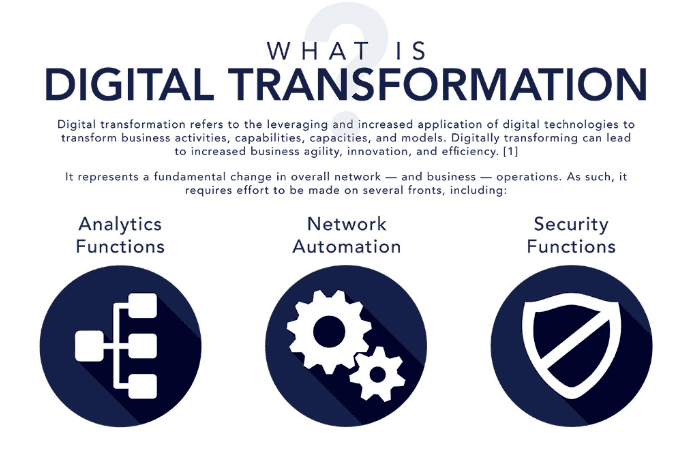
As climate change continues to shape corporate agendas, businesses are turning to technology to meet ambitious carbon reduction goals. IT departments, once primarily seen as support functions, now play a pivotal role in shaping a greener future. From AI-powered data analysis to optimizing energy-intensive systems, IT is at the forefront of helping enterprises lower their carbon footprints and reduce emissions.
The Shift Toward Data-Driven Sustainability
One of the most significant ways IT supports carbon reduction is through data-driven decision-making. Accurate data collection allows organizations to monitor energy consumption in real time and identify high-emission activities across their operations. Whether it’s tracking energy demand from cloud infrastructure or analyzing transportation logistics, data helps pinpoint opportunities for improvement.
Enterprise Resource Planning (ERP) systems, for example, can be configured to provide insights into energy use, supply chain emissions, and waste. This kind of visibility is key to developing effective carbon reduction strategies and maintaining compliance with environmental regulations.
Artificial Intelligence and Automation
Artificial intelligence is transforming how enterprises tackle sustainability. AI-powered tools can predict energy usage trends, automate shutdowns during low-demand periods, and optimize HVAC systems for efficiency. These technologies not only reduce energy consumption but also help in minimizing reliance on fossil fuels, steering organizations toward renewable energy sources instead.
Machine learning algorithms also help model the effects on carbon emissions when adjusting operational processes, allowing decision-makers to evaluate outcomes before implementation. The result is smarter, faster execution of sustainable solutions backed by solid data.
Cloud and IT Infrastructure Optimization
The move to cloud computing has had a complex impact on sustainability. While data centers are energy-intensive, advances in cloud architecture, particularly green data centers, are improving energy efficiencies. Major cloud providers now offer tools that allow businesses to monitor and manage their carbon output, helping IT teams track progress toward reduction goals.
IT teams can also reduce emissions by consolidating hardware, embracing virtualization, and managing storage more efficiently. These steps reduce both direct energy usage and the indirect emissions tied to the hardware lifecycle.
Carbon Accounting and Reporting
Carbon accounting platforms often developed or implemented by IT departments are essential for enterprises to report progress on sustainability metrics. These platforms centralize data on energy consumption, transportation, material sourcing, and more, allowing companies to generate reports that are accurate and actionable.
As regulatory pressure increases, automated carbon reporting tools help organizations remain transparent and meet stakeholder expectations. The IT role here is both strategic and operational, selecting the right tools, integrating them with existing systems, and ensuring secure, continuous data collection.
IT Services as Catalysts for Change
Beyond internal operations, IT services also influence supply chains and customer interactions. Sustainable procurement systems, powered by enterprise software, can evaluate the environmental impact of vendors and materials. IT also supports platforms that let consumers track the carbon footprint of their purchases, enhancing accountability and empowering better choices.
Meanwhile, managed IT services are increasingly evaluated not just for performance, but for their sustainability credentials. Enterprises now demand partners who demonstrate real commitments to reducing carbon emissions and aligning with broader ESG goals.
The Human Side of IT and Sustainability
Technology alone isn’t enough. Success in this area also depends on mindset and culture. IT leaders must collaborate with sustainability officers, facilities managers, and C-suite executives to embed environmental considerations into every layer of decision-making.
That includes developing training programs to raise awareness, building dashboards that track impact in real time, and championing green tech initiatives across departments.
Looking Ahead: The Future of Sustainable IT
The next frontier lies in scaling these solutions across industries. From manufacturers using ERP systems to cut waste, to banks analyzing data centers’ energy demand, the IT role in driving enterprise carbon reduction is only expanding.
Emerging tech such as blockchain can ensure supply chain transparency, while edge computing reduces the energy load on centralized servers. Meanwhile, newer AI applications continue to evolve, offering more refined ways to measure and lower carbon footprints.
In short, the future of enterprise sustainability hinges not just on ambitious pledges, but on the smart use of technology to fulfill them. By leveraging IT’s full potential, businesses can meet climate goals while driving innovation, efficiency, and long-term value.



![[Infographic]: What is Microwave Transmission](https://blog.mho.com/wp-content/uploads/2017/10/Screenshot-2025-06-24-141523.png)

